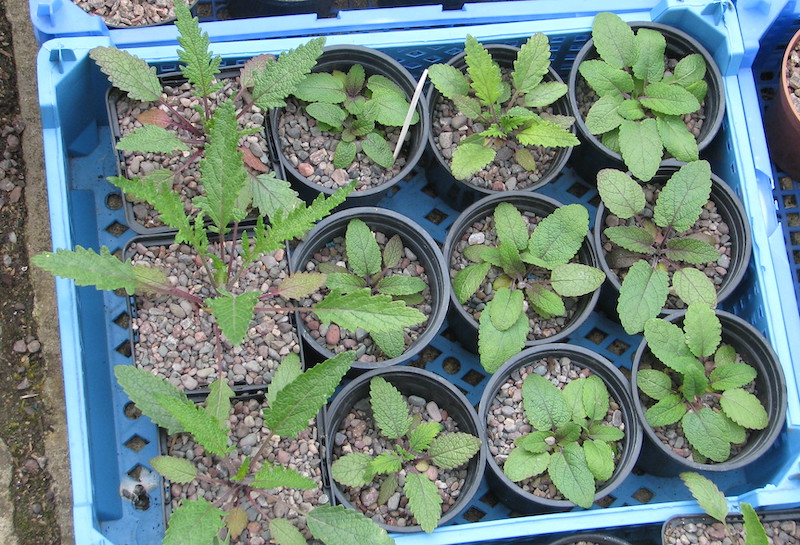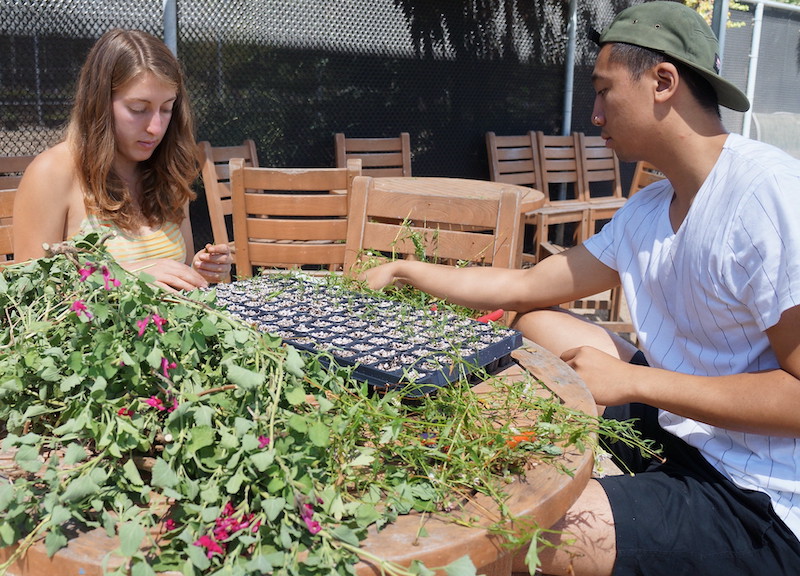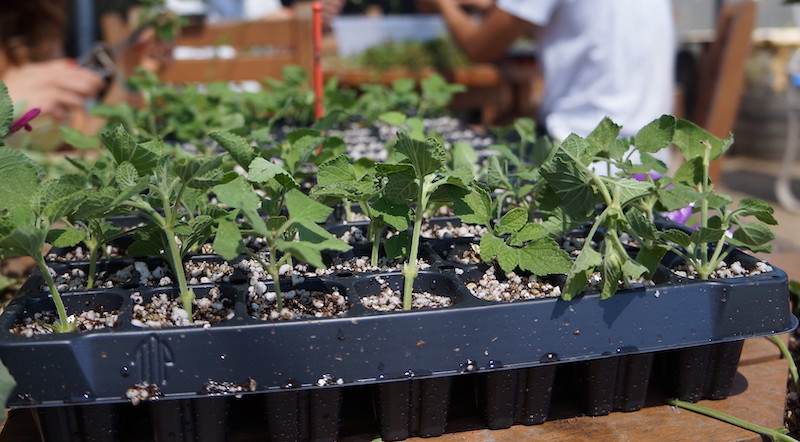Salvia encompasses a large group of herbaceous and semi-evergreen perennials that grow in a wide range of climates. Although most are quite hardy (USDA zone 4), several are tender and do not survive harsh winters. These more tender types can be overwintered as cuttings or small plant divisions in a frost-free location. Propagating the more hardy types is a great way to multiply your plant stock and share plants with your neighbors. Plants grown from softwood cuttings or division will bloom in the first or second year. Plants grown from seed will take two or more years to bloom.

Photo by peganum, cropped, Flickr, Copyright CC BY-SA 2.0 DEED
Methods To Propagate Salvia
Salvia can be propagated in three ways: seeds, root division, and softwood cuttings. Softwood cuttings and root division result in clones of the parent plant; these should be done at certain times of the year after the plants have grown for three or more years. Growing plants from saved seeds is easy to do and does not require seed stratification to ensure germination. The only drawback to this method is the collection and storage of the seeds. They are very small and when ripe, they explode from the pod, often traveling far from the parent plant.
What You Need To Propagate Salvia
Propagation via cuttings requires sharp hand pruners, a pocket knife, alcohol for sterilizing blades after cutting plants, small pots (4-6 inch diameter) or seed-starting flats, all-purpose potting mix, perlite or vermiculite, and a watering can with a fine spray head for watering.

Photo by UC Davis Arboretum and Public Garden, cropped, Flickr, Copyright CC BY 2.0 DEED
Growing salvia requires sterile seed-starting potting mix, vermiculite or perlite, seed-starting flats with individual growing cells, and a watering can with a gentle spray head. You will also need a sheltered location that receives bright light to assist germination and protect young seedlings. Salvia seeds do not need extra heat or cold stratification for germination. Bright light is what spurs the seed to start growing.
Division of the crown and roots is the easiest method of propagation. You will need a long-handled, narrow spade for digging out the root ball from a tightly planted garden bed. A pair of short-handled garden forks or a garden knife can be used to divide the root ball. Use a watering can or hose to water the new plants in. Applying a 2-3 inch layer of mulch around the plant is helpful but optional at the time of planting.
Best Time To Propagate Salvia
Salvia can be propagated during almost any part of the year using a combination of all three methods. Early in the spring and late in the summer is the best time for dividing clumps of salvia plants. The hardiest varieties of salvia can be divided in early fall as their foliage dies back for winter dormancy. The shoots for next year's growth are easy to see and can guide where to divide plants.
Seeds can be started either in the late winter indoors or late in the spring outdoors in a sheltered location. The bright light and longer days of early summer help the seeds germinate and produce sturdy plants. The new plants will be ready to plant either in the fall or in the following spring.
Cuttings should be taken in summer as the new growth matures. Take cuttings of any salvia that is not fully hardy for your growing area and grow them in a frost-free location over the winter.

Photo by UC Davis Arboretum and Public Garden, cropped, Flickr, Copyright CC BY 2.0 DEED
Steps To Propagate Salvia
The best and by far the easiest method for propagating salvia is dividing up vigorously growing plants. Division can be done every 3-4 years or as needed to rejuvenate growth on large plants.
Step 1 - Dig out the rootball of the plant you want to divide, being careful to include as much root material as possible.
Step 2 - Gently shake off the soil to see the root system and crown of the plant.
Step 3 - Using two hand-held garden forks or a serrated saw, cut between the stem shoots. Include as much root material in each division as possible, as this will allow the plant to establish quickly when replanted.
Step 4 - Transplant the newly separated plants into prepared planting holes that are the same depth as the parent plant was growing. Gently firm the soil around the roots to get rid of any air pockets.
Step 5 - Water the plant well until the water puddles on the soil. Then, wait for it to drain away before applying a layer of mulch.
Step 6 - Water new transplants regularly until new top growth emerges, letting you know that the root system is established.
Caring For Salvia Divsions
Divided plants will require supplemental watering and fertilizing until they are well established in the landscape. Allow for 1 inch of water a week from natural rain, drip irrigation, or soaker hoses. Apply a diluted liquid fertilizer once a month through the growing season to encourage good root
 |
Author Robbin Small - Published 11-16-2023 |
